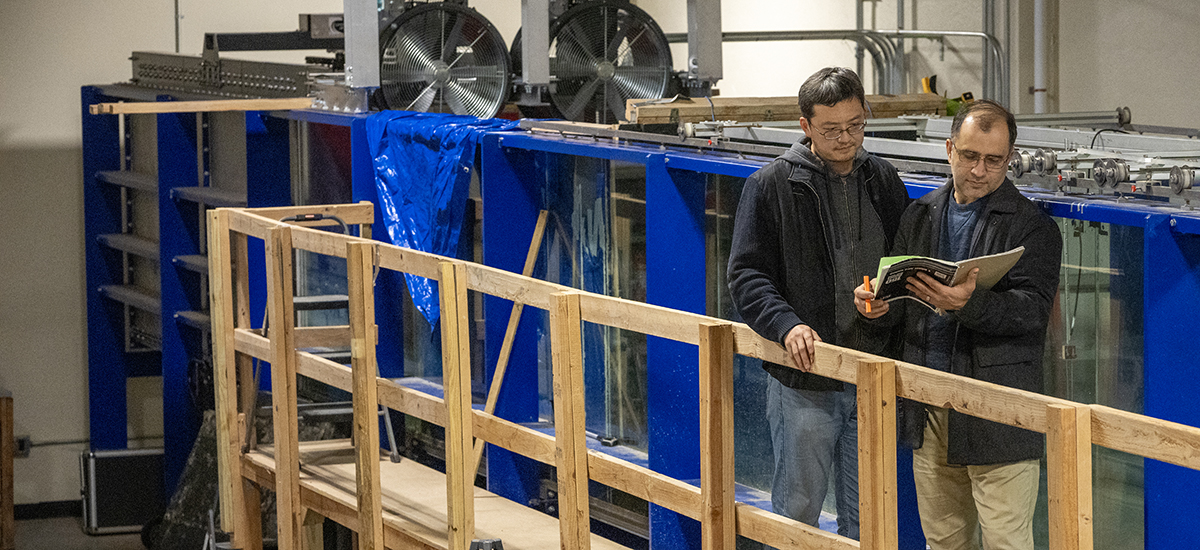On January 21, Governor Kathy Hochul released the FY2026 Executive Budget to the public, announcing the largest climate investment in New York State’s history.
The climate priorities outlined in this announcement–which include $1 billion to fight the climate crisis and transition to clean energy, as well as substantial investments toward clean water infrastructure, remediation of hazardous waste, and coastal resilience–align quite closely with significant and successful efforts already undertaken by researchers at SUNY Stony Brook, the No. 1 public university in New York and the anchor institution for the New York Climate Exchange.
In 2022, for example, Dr. Chris Gobler and his team completed a decade-long project to restore the hard-shell clam population in Shinnecock Bay. After forty years of previous restoration efforts had failed, Gobler restored the bivalves (which are important for estuary health) by 1,700 percent. Dr. Gobler is also one of the founders of the NYS Center for Clean Water Technology, which has received substantial investment from the State and develops and distributes new methods to remove pollutants from both New York’s drinking water and wastewater.
The multi-institutional research project Dr. Ali Farhadzadeh, Associate Professor in the Department of Civil Engineering, has found that “foundation scour”–the erosion of the soil or sediment around a building’s foundation due to currents or waves–is one of the leading causes of damage to coastal communities’ infrastructure in floods and storms. Their goal is to make models to prepare coastal communities and help civil engineers design safer structures for increasingly extreme weather. Per the NYS Department of Environmental Conservation, “Over the past 12 years, every county in the state has seen flooding.” And even further, “16 counties have had 5 or more federal flood disasters.”

And in summer of 2023, the state was confronted with the very real impact of poor air quality when massive wildfires in Canada turned our iconic skyline orange and caused New Yorkers’ air quality to deteriorate dangerously, especially for our most vulnerable populations. That same year, Dr. Minghao Qiu (jointly appointed between the School of Marine and Atmospheric Sciences and Program in Public Health) and other scientists published a study in Nature that found that wildfire smoke has already seriously diminished decades-long efforts to remove the number of particle pollutants in our air. New climate science hires at Stony Brook like Dr. Qiu will be key in partnering with policy makers and lawmakers in the years to come.
The FY2026 Executive Budget also highlights the need to decarbonize SUNY and CUNY campuses and this imperative couldn’t be more timely. According to the SUNY Draft Sustainability plan, SUNY constitutes 40% of the State's buildings and by most measures, its buildings and construction amounts to 39% of co2 emissions. In 2025, a year already marked by super storms and wildfires, the irony here is woeful. SUNY, one of New York State’s most prized resources, should be a test bed for those faculty and scientists doing critical research in the climate fight. World-class universities like Stony Brook have the ability to set an example for institutions (and individuals) across New York in how to work, act, and live sustainably.
Yet in order to continue on this successful trajectory, Stony Brook University will need to maintain its ability to recruit, hire, and sustain the best climate faculty in the world through excellent laboratories and research facilities. As Interim President Richard McCormick announced in his State of the University in the fall of 2024, many of the university’s facilities need to be updated and others must be replaced to sustain the university’s considerable momentum in New York’s climate fight.
Importantly, the Governor’s Executive Budget invests $200 million for capital improvements in SUNY University Centers. This is a great first step and the State will stay competitive if we continue to invest in transformative climate research. As SUNY and NYS prioritize the decarbonization of SUNY campuses, maintaining competitive research facilities at leading public research institutions like Stony Brook University will also be integral to our committed sustainability efforts.



